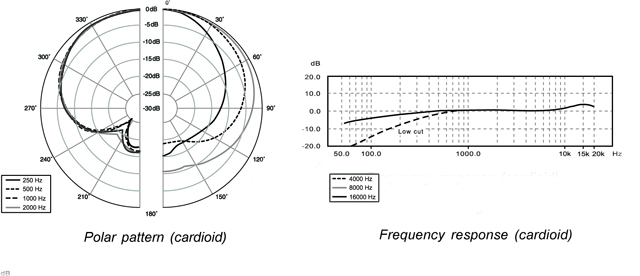As a
group we decided on two microphones to mic up the piano. The two
microphones we chose were one Behringer B5 condenser microphone and
one AKG C1000S condenser microphone.
We
decided to use two condenser microphones for the piano because they
are far more sensitive compared to a dynamic microphone and therefore
will pick up a vast amount of detail. This will benefit us because a
piano is quite a delicate sounding instrument and a condenser
microphone will pick up all the small details that will ensure we get
the full picture of the sound to work with when mixing and
mastering.
We
chose the Behringer B5 microphone for the higher end of the piano and
the AKG C1000s microphone for the lower end of the piano. We decided
this because the Behringer B5 microphone is more responsive in the
higher end of its frequency response. However, the AKG C1000s
microphone is reasonably responsive in all areas throughout the
frequency range. From previous experience we know that the AKG C1000s
microphone is good at picking up delicate sounds as we used it to
record an acoustic guitar.
The
standard 88 keyed piano has a frequency range from 27.5Hz (A0) -
4.2Hz (C8).
The
Behringer B5 microphone has exchangeable cardiod and omnidirectional
polar patterns. A polar pattern is a graph showing whereabouts a
microphone picks up from. A cardiod polar pattern means that the
microphone will pick up from the front of the microphone only. The
frequency response for the Behringer B5 is from 50Hz - 20,000Hz.
The
above diagram is showing the frequency response for the cardiod
pattern for the Behringer B5 microphone and the frequency response chart.
The
omnidirectional polar pattern means it'll pick up from opposing sides
of the microphone however, this will be no good because were focusing
on one area of the piano with this microphone.
The
AKG C1000s microphone ranges from the same as the Behringer B5 mic
(50Hz – 20,000Hz) and is a reasonable frequency response throughout
the frequency range. However, as stated above the piano's frequency
range seems to be a lot lower than what the microphones are able to
pick up, but this will not effect us as only the mid-range and
high-mid ranges of the piano will be used.
The above graph shows us the cardiod
frequency response chart for the AKG C1000s microphone and the frequency response for the AKG C1000s microphone a meter from the
sound source, this is showing us that the frequency response is
reasonable the whole way through the frequency chart.
I'm missing one picture so far of the cardioid polar pattern for the AKG C1000s but that will be added very soon.
Thanks for reading,
Chazzy!


The stuff you are writing blows out my mind.
ReplyDeletepro audio